The Brave Story series features different personalities that have demonstrated courage and commitment to a cause, an initiative, or movement. We share their stories hoping that their journey and the lessons they learned along the way can serve as motivation and inspiration to us all in whatever path we choose, personally or professionally.
Marcos Chin is an award winning Illustrator whose work has appeared as surface, textiles and wall designs, on book and CD covers, advertisements, fashion catalogues, and magazines. He currently lives on the territory of the Munsee Lenape (Brooklyn) and teaches Illustration at the School of Visual Arts in NYC.
Tell us about yourself and how you create.
My story is the kind of immigrant story that you’ve probably heard before. I was born in Mozambique, Africa, as were my parents and we lived there until the mid 1970’s when we left because of civil war. We moved to Lisbon, Portugal for a short while – Mozambique had been a Portuguese colony for about 500 years and when the revolution happened there was a mass exodus; Lisbon made sense because my parents speak portuguese. Soon afterwards, we moved to Toronto, Canada through sponsorship by my aunt and uncle. I lived there until 2005 and then moved again, this time to New York City which is where I’ve been ever since. I came to NYC because it represented the hub of illustration. It was a creative center that I knew would inspire me in a way that I sought out. This is where my heroes lived or passed through. I wanted to connect with it too – I wanted to find out firsthand what the big deal was. I’m so glad I stayed.
My creative process usually begins with a lot of sketching. To someone who’s looking at them it’d probably look like scribbles and scratches, but to me those marks contain information, it’s a shorthanded way of getting my ideas out of my head and quickly onto the page. At this beginning stage “flow” is incredibly important. I like to use soft pencils, fine liners and brush pens to make my rough drawings because of the way in which the pigment comes out of the tool adds to the flow (I don’t use any hard pencils or markers that are running out because it makes my process feel too choppy – struggling with my drawing instruments is frustrating and becomes an obstacle). In reference to ideas, it really depends on the project I’m working on; I might be inspired by the people and environment around me, friends and strangers, my memories, stories that I read, music, walking through the park or subway station – there’s potential in everything and so I pull from anywhere. Grace Coddington who was the former Creative Director of American Vogue magazine in the movie, “The September Issue” talks about keeping your eyes open so that you can take in everything, because if you’re not paying attention then you could miss something. I love this way of thinking – it makes so much sense and feels very romantic.

… But back to my process, once I spend a few hours brainstorming then I look at everything that I’ve drawn and select a few of them that I refine into a tighter and more legible drawing. At this stage I might do some photo research to see if the internet might help me expand my ideas. Next, I use this refined drawing as a template on which I redraw my final illustration using vector lines – my software of choice is “Adobe Illustrator”; my tool is the “Pen Tool”. From that point, my process becomes more unorthodox in the sense that I combine media – I draw on top of my vector illustration using analog materials such as ink, watercolour and charcoal. Sometimes I print out my drawing, paint or draw on top of it, then scan it into the computer and layer it on top of the vector drawing. I do this over and over again until I feel like the piece is done (or when time runs out – deadlines!) this part of my process feels more intuitive and so, the computer becomes just another tool that I use to layer in between traditional drawn and painted sections.
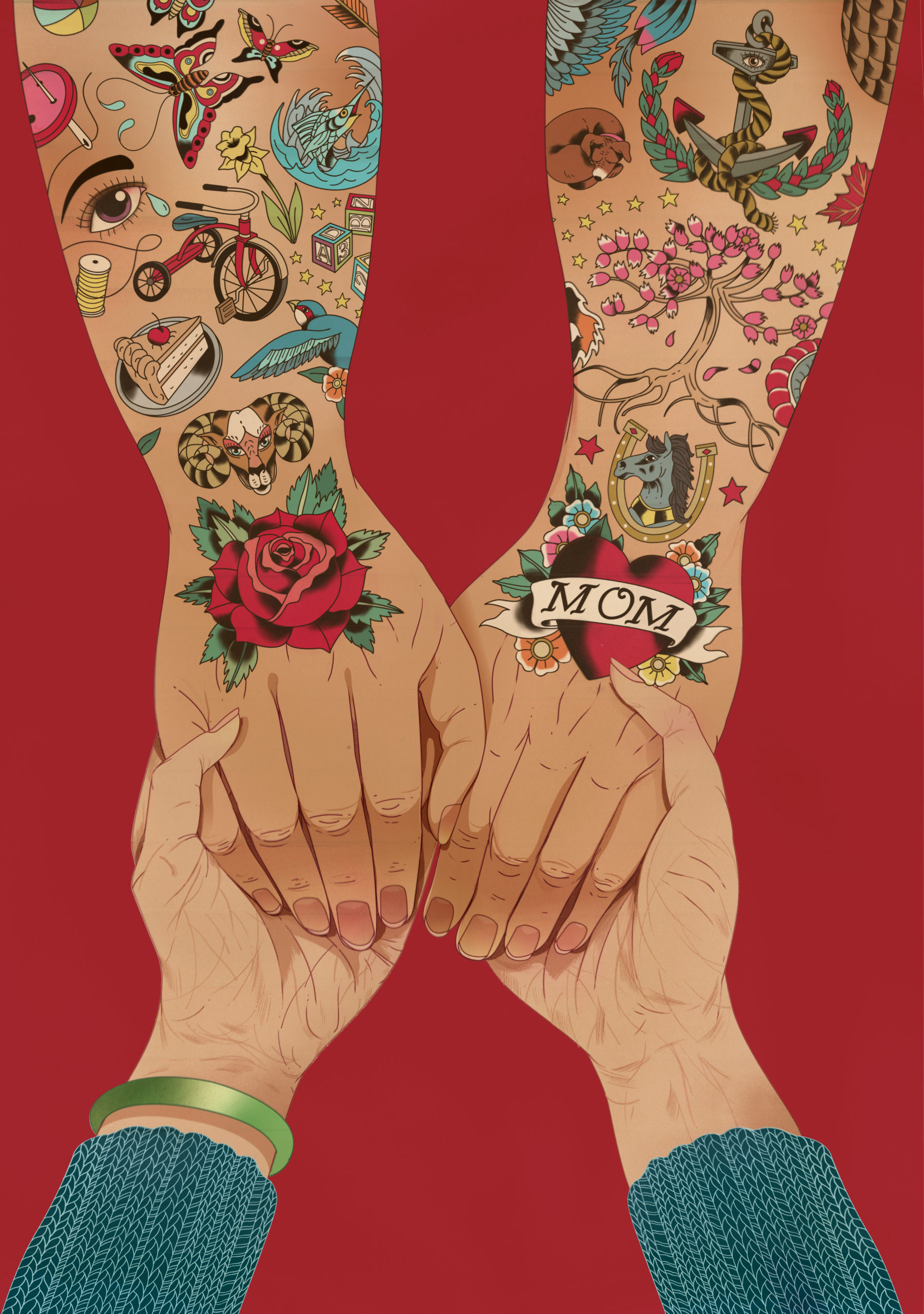
As you know, your work for LAVALIFE had a deep effect on my life (my wife and I met on LAVALIFE after seeing Marcos’ work in their subway ads!) and I know this was your first major project out of art school. How did this job affect the direction of your career?
I come from a working-class family. When I was young there were seven of us living in a three bedroom apartment in a suburb of Toronto. My mother worked in an office, and my father worked in factories and cleaned offices. Neither of them had much money, or went to college. My parents didn’t have to worry about daycare because my aunt and my grandmother lived with us too. I was raised in such a way where there were limitations about what I could become in the future and that working in a profession connected to art or design wasn’t realistic. In my mind these spaces were reserved for people who had money and privilege – I had neither of one those things. So, when I found myself studying art at the undergraduate level (as a result of teenage angst and rebellion) and as I was approaching senior year I began to worry because I wasn’t sure if I could pull it off. However, at the same time I was excited because well – maybe there was a chance that I could make this happen for real.
The Lavalife campaign gave me a kind of press that no other project did before then. It also gave me a level of income that allowed for me to not have to think so much about money. As a result, I was able to focus more energy on my art and illustration. The media buy for Lavalife was huge – my illustrations were seen on various platforms, all around the world. Because of the expansiveness of the campaign internationally and the ubiquity of it within the US and Canadian markets, it introduced groups of people to my work who may never have seen it as a result. Soon after the first campaign was launched, I started to get more work in this fashion-lifestyle spaces, which has continued ever since. The amazing thing about working professionally on so many projects so early on in my career was that it gave me an opportunity for accelerated learning because working on so many projects simultaneously meant that I was also honing my craft and learning in a deep way how to run my business; how to communicate with clients, how to manage money, how to consider ways of marketing my work and so on.
I’ve read about how you – as a gay Asian man – didn’t see yourself honestly portrayed in society. How have you dealt with this in the images you create? In your opinion has it gotten better? Worse?
I think it’s gotten better – I think representation has gotten better overall. As a country, I believe we’re experiencing a reckoning in which a lot of beliefs that have become part of our foundation – beliefs about “others” which have affected the way we see, perceive, and treat people who are different from us are being challenged. And so, the tropes and stereotypes, in this case of Asian men – particularly gay Asian men being docile, agreeable, quiet, effeminate which have been viewed as negative are breaking apart. This doesn’t suggest that these stereotypes don’t exist anymore, and it also doesn’t mean that expressing this way isn’t looked down upon. But what I’m trying to suggest is that there seems to be more consciousness and spaciousness in terms of how we are being represented in gay culture; that what used to be considered “less than” becomes elevated, placed into the foreground of person’s life and celebrated, which is why I think there are more people who are choosing to blur the boundaries of gender and challenging old ways of thinking about race, ethnicity, sex, sexuality, and gender. The white, masculine, muscular or twinky, Eurocentric beauty is still that which other types of beauty are measured against. But in the twenty years that I’ve been “out” I feel like it’s become less rigid as a result of the uprising of individuals whose definition of beauty opposes those standards. On gay male dating apps you may have heard the expression,
“No fats. No femmes. No Asians.”
This way of thinking is still pervasive within gay male culture; however, in recent years new apps have been created, new social spaces, the content of television and movies appear to be shifting to include more diverse characters – all of these things are helping to widen the circle in order to make more people feel included. As an illustrator, I’ve become conscious of representation and so I design my characters to subvert these negative stereotypes and to fight the erasure of specific individuals. It’s a heavy load to carry sometimes because you can’t include every type of person in every single drawing, but when step back and view my entire body of work as the platform on which to have this conversation, then I believe it’s possible.
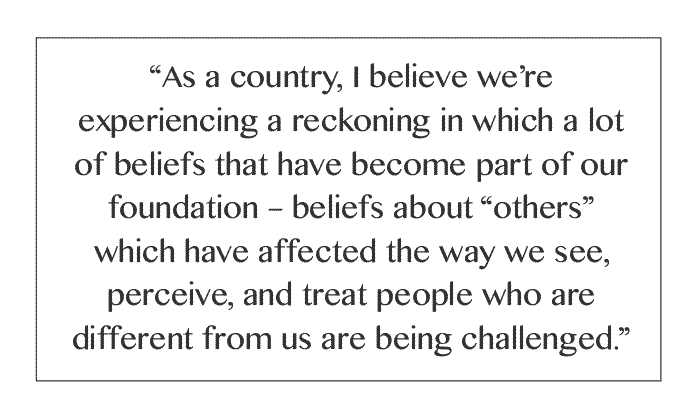
One of the things I love about your work is the all gorgeous detail and storytelling innate to your illustrations. How did you establish this style?
This was something that happened over time and continues to happen. There was a lot of trying on of different styles and using various materials. Over time, some of them stuck and some I let go of… it was a very organic process. Comics, cartoons, picture books, anime, manga were all things that I enjoyed as a child not only for the visual component but for the storytelling as well, they became inspiration for my work as well as learning tools. I learned how to draw figures by looking at comic books. Granted the men and women were always so muscular, but what that allowed me to do was to understand the structure (and gestures and poses) of the human body, and the forms that lay underneath the skin. As a kid I never read comics, but I did look at the pictures and got the gist of the story by looking at the panel sequences of the illustrations. As I got older, this love of visual narratives continued, and I then I fell in love with other things: art and fashion editorials, music videos, nightlife, drag and ball culture. Stylistically my work is made up of all the things that I love – loved – throughout my life.
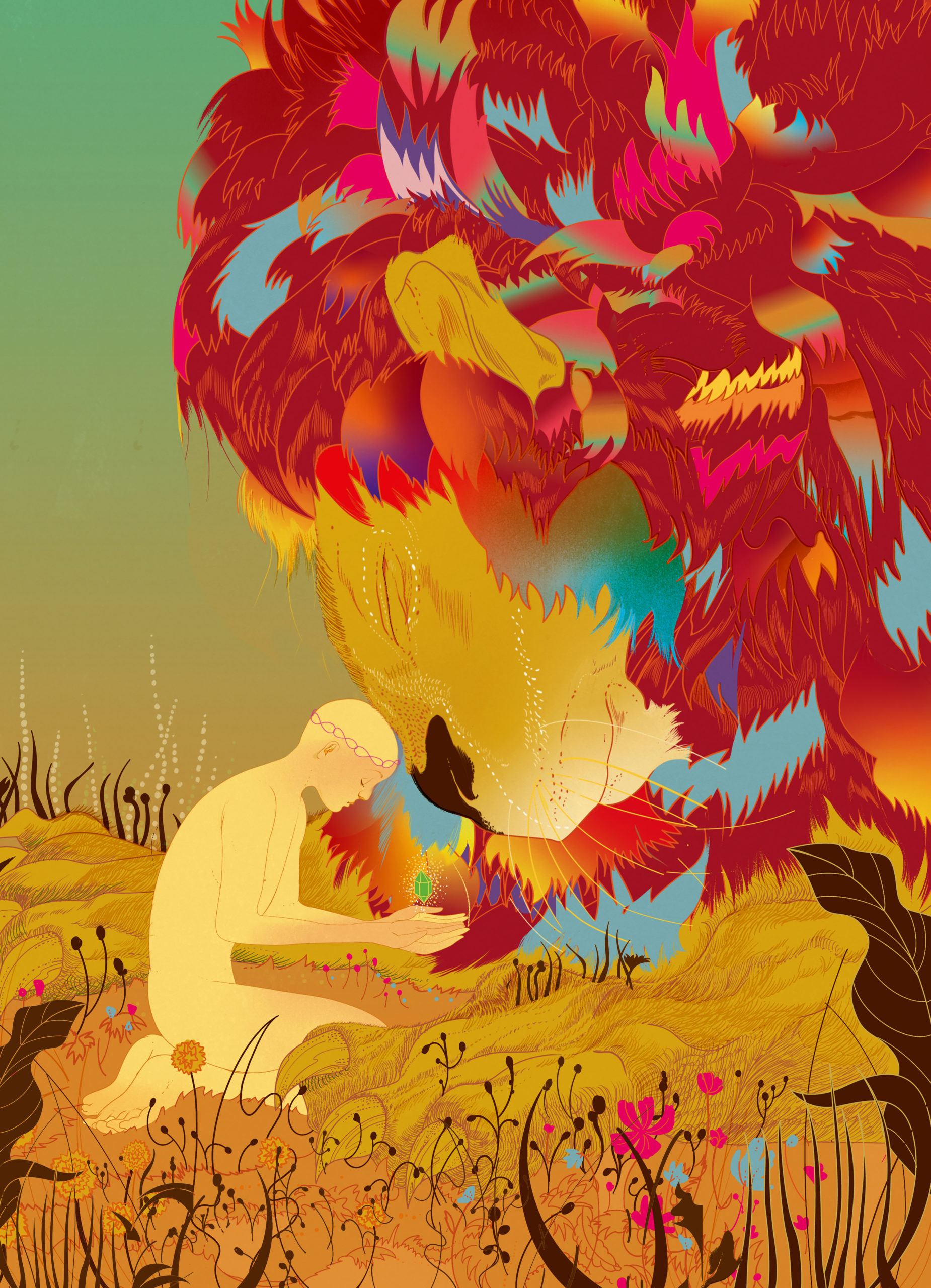
I know you’ve taught illustration for a number of years now – it must be difficult finding time for this. What keeps you inspired to keep teaching?
It can be tough sometimes, especially this past year – having taught remotely twice a week since March with the summer off has been very challenging. I love teaching though. It’s weird because when I started I wasn’t much older than my students… I was barely 30 years old and so I wasn’t sure how a connection would form between myself and my students. But strangely as they started graduating year after year, and as I began to hear about their successes, I felt proud. I keep in touch with a lot of my former students and I view many of them as friends now. I think maybe this is where the answer to the question lies… What keeps me inspired to teach is the connection, the exchange, the conversation, that I constantly learn from them and as I get older there are also new (good) feelings that are surfacing as a result of this kind of service – sharing my knowledge, helping students build their practice, and wanting for them to succeed have become important to me. I sometimes joke that being a teacher is like being a vampire, that every year my students’ ages stay the same, but I get older… and so like a vampire in order to stay connected to the times I need guides, like Tom Cruise had in Brad Pitt in Anne Rice’s “Interview With A Vampire”… ha! But seriously, I think why I’m still doing this is because it just feels good, and I don’t really think much beyond that… Having said that, I’m up for a sabbatical next year – just sayin’.
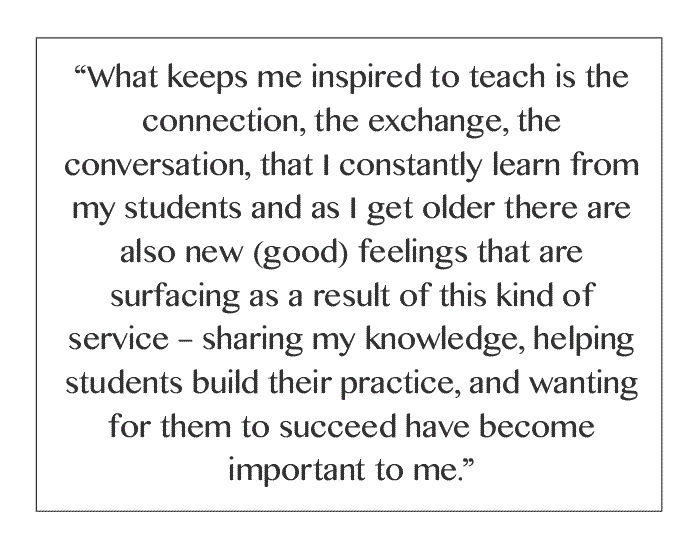

What would you say to aspiring illustrators coming up in the field now? Has proliferation of cheap design/illustration sites (fiverr, crowdspring) made life as an illustrator harder?
To aspiring illustrators who are coming up in the field now, at the core my advice would be similar to what I would tell my younger self. It’s important to be in love with what you make and the materials you use to make it with, whether that’s drawing and painting with traditional analog tools, or using the computer, Ipad or whatever technology is in the future to draw with. I’ve been doing this for over almost 20 years, and I’ve experienced the highs and lows that come with this profession. I really believe at the core the reason that I’ve been able to move alongside and through challenging times in my career is because I love what I do. I sometimes see my career as a relationship that I have with another person. Doing this allows me to treat it with a level of importance that I otherwise might not. And like relationships, things take work, time and patience (for better or for worse) and one of the ways for relationships to have longevity is to be open to learning new ways of communicating with your partner, which includes listening to their needs as well as your own. It sounds cheesy, I know… but ask yourself questions like:
“What do I love?”
“What excites me?”
“What frustrates me?“
“Are there specific stories that I want to tell about my own life?”
“How am I feeling right now?”
“How is the world?”
“What’s happening in the world?”
“Do I care?”
“What do I care about?”
If you pay attention and listen to your responses to some of these questions it’ll act as a kind of “first step” to making something. My philosophy is to try to make the kind of work that will get you the kind of work you want rather than making work that will get you any kind of work. Specificity and point of view are important, it gives your work personality and helps to make your work memorable.
Another piece of advice that I’ve given to illustrators coming up in the field is to use parts of yourself to inform your artwork. So many of us are taught that inspiration comes from the exterior, things around us that we use and take as inspiration, but there’s also a rich pool of resource inside of you. Tap into it. Pay attention to those things that you love, which move you. Some of them might even make you feel uncomfortable, but even this discomfort can become fuel for your work.
I’m not sure if cheap designs and illustration sites have made it more difficult for me to find work. I don’t know much about them… I’ve never used them. I feel like the industry will always be changing, but if I continue to educate myself, stay connected, be flexible and relational then I’ll be fine. When I look back at my career I never expected to be here. Not in self-deprecating way, rather I’ve gotten much more than I’ve asked for. I mean, I’m not rich and I’m not a star in the industry, but I’m happy and grateful for where I am and the things I’ve made. I feel like if I continue to be flexible and honest with myself and continue to trust my intuition along with the knowledge I’ve accumulated so far, then regardless of the changes that will inevitably occur within the illustration industry I’ll be able to have a good life.
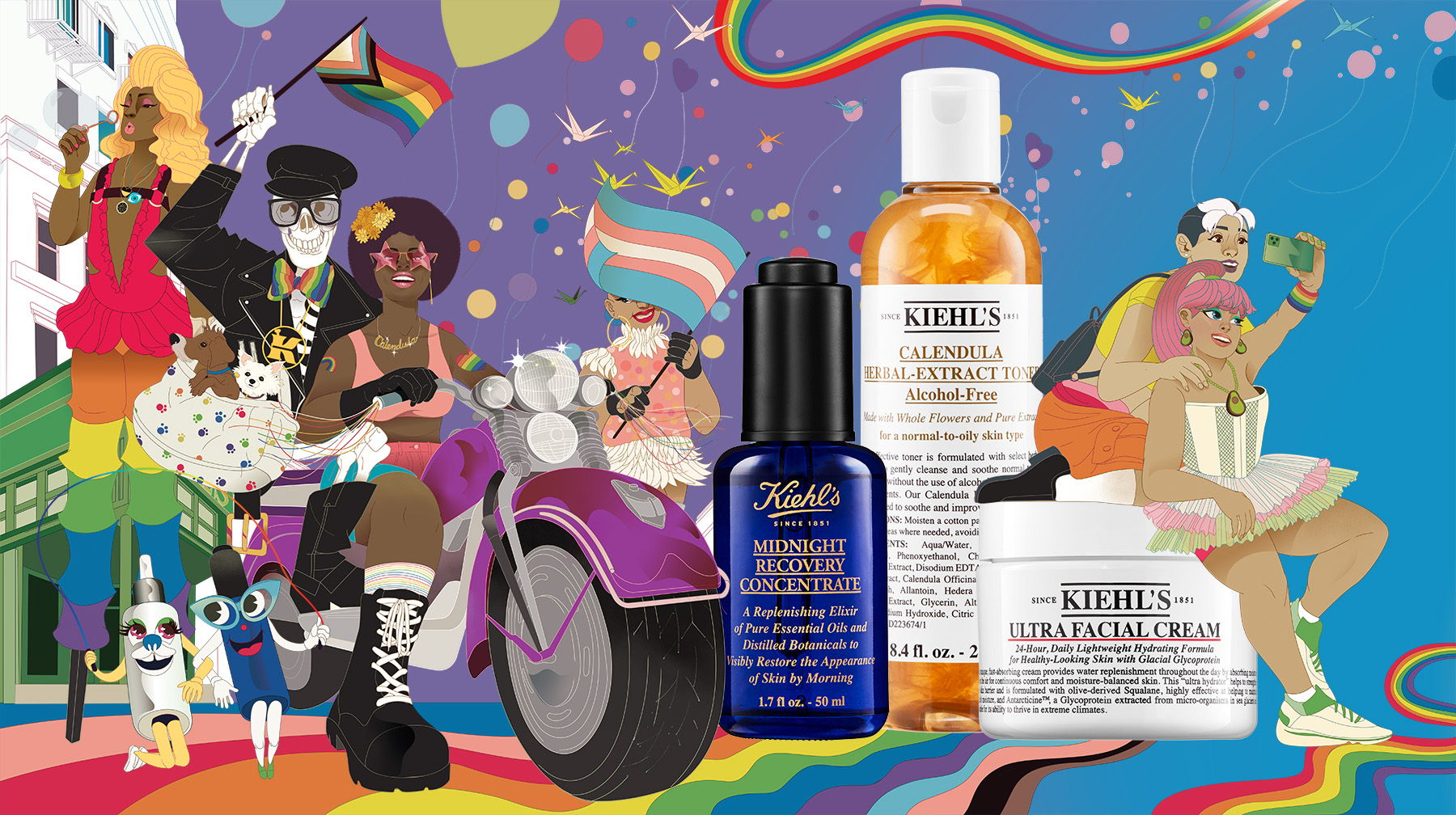
What project have you worked on recently that you couldn’t wait to wake up in the morning and get going on?
The Kiehl’s project was one of the most recent ones that I felt excited working on… and I’m not only saying this because I collaborated with you, Travis… ha! The reason is because this project felt more like I was building a world of characters, which is something that I don’t often get to do in my profession, so in a way it hovered in a space that was a blend of commercial and personal work. As an illustrator I usually work on a variety of projects that don’t last for very long, that’s because most of the work that I do is rooted in editorial so the turn-around is usually very quick and the number of illustrations I’m commissioned to make aren’t more than one or two. This project however, had so many facets to it and it kept growing in a way where all the drawings needed to feel like they belonged in the same world.
What does being brave mean to you?
I’ve been thinking about how to answer this question over the past few days… walking around in my apartment, at the gym and on my way home from the grocery store. Although my initial response was that bravery is connected with courage in a very physical way (which I do believe) I started to reflect on this past year and the complicated feelings that were entangled with it. Bravery doesn’t have to be a big feeling. It doesn’t have to present outwardly so that others can see it. Bravery is about responding to fear and uncomfortability, and it’s also about responding to truth-telling (which can be murky because we all have different versions of what we believe are true or false). Bravery can be personal and private, like admitting truth to oneself even though you know that saying it out loud will cost you. It’s about protecting the truth and also being accountable when we do so. Bravery can be about allowing yourself to be changed by someone else’s words or opinions that might be different from your own.



